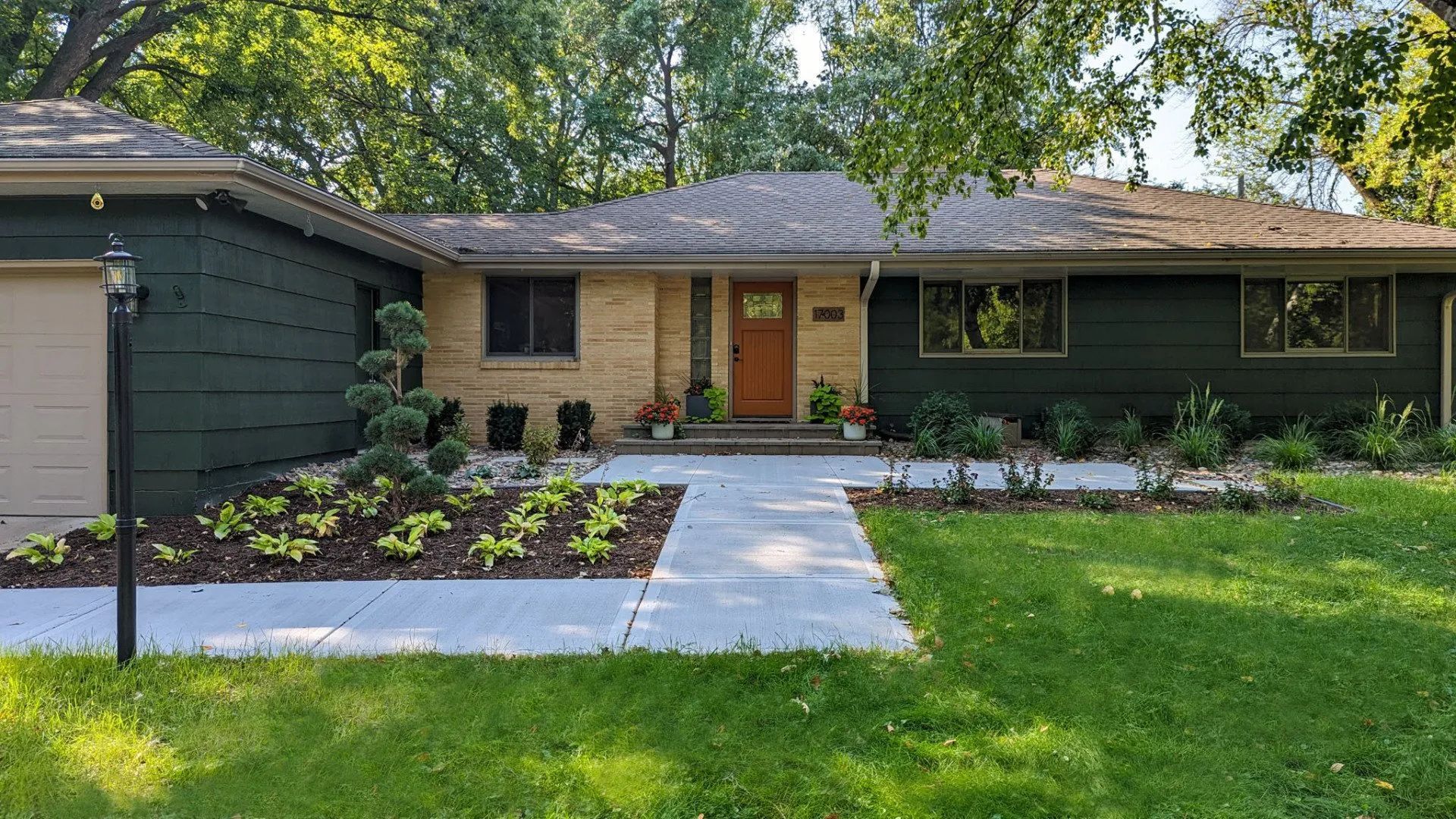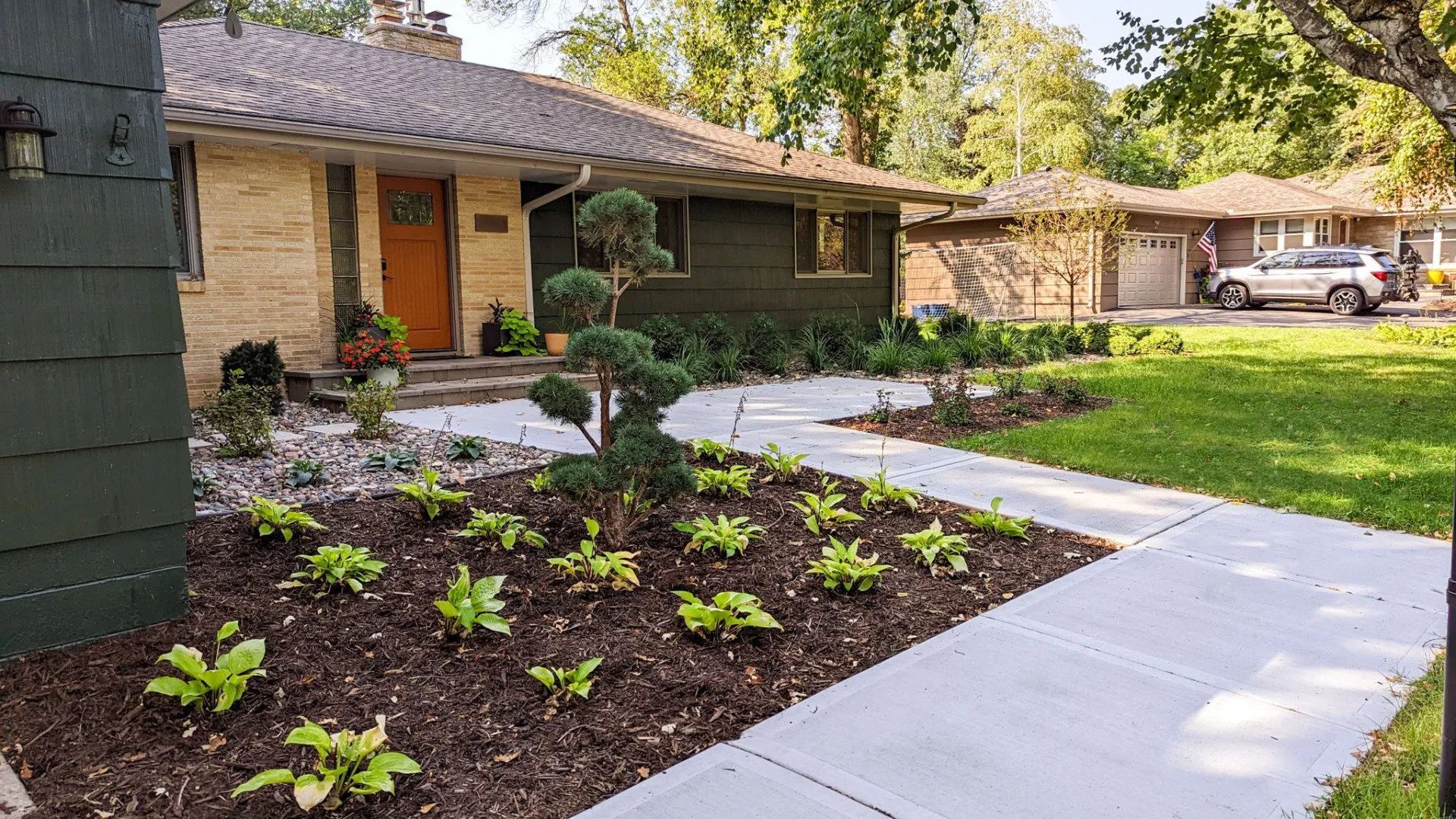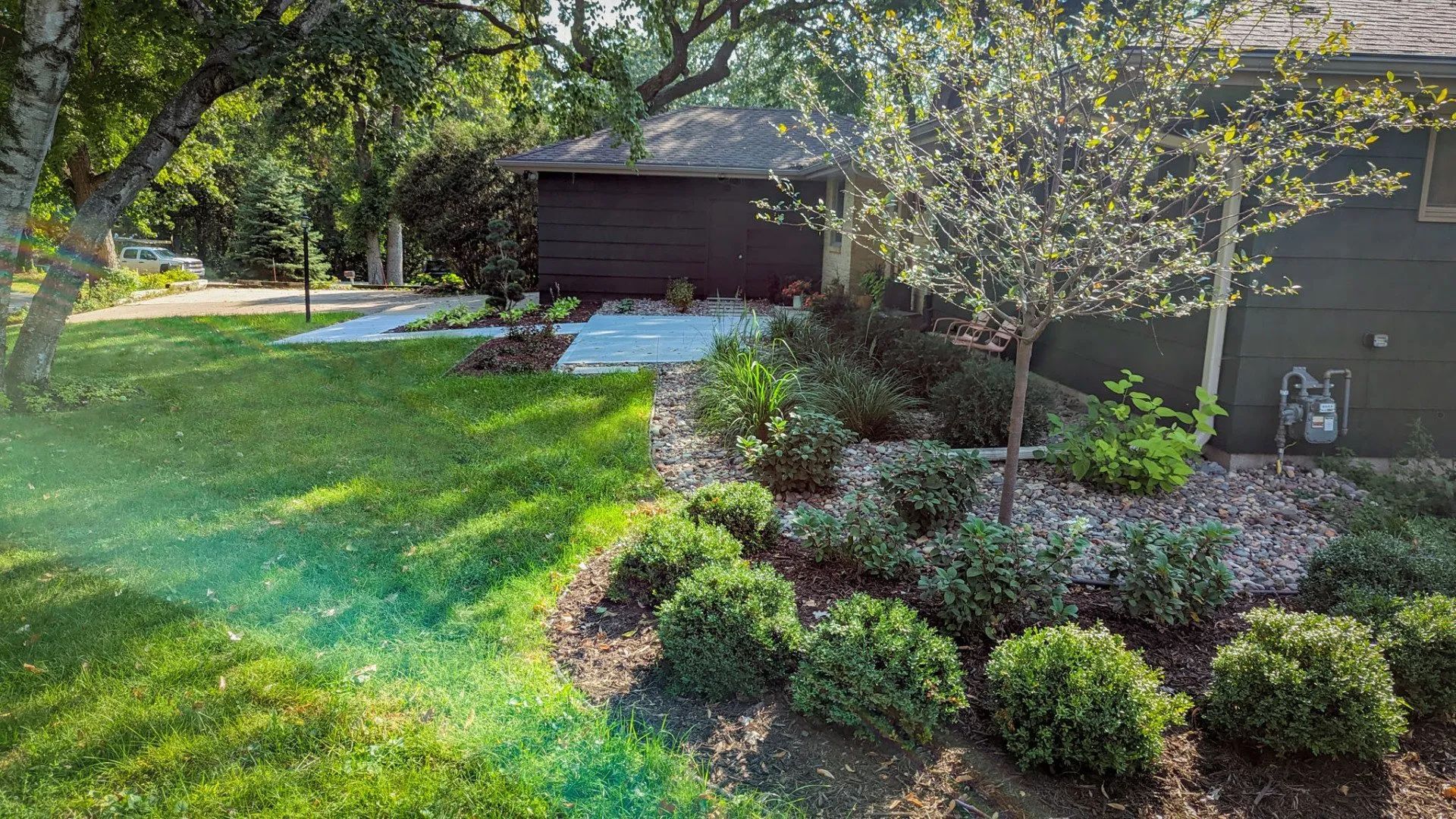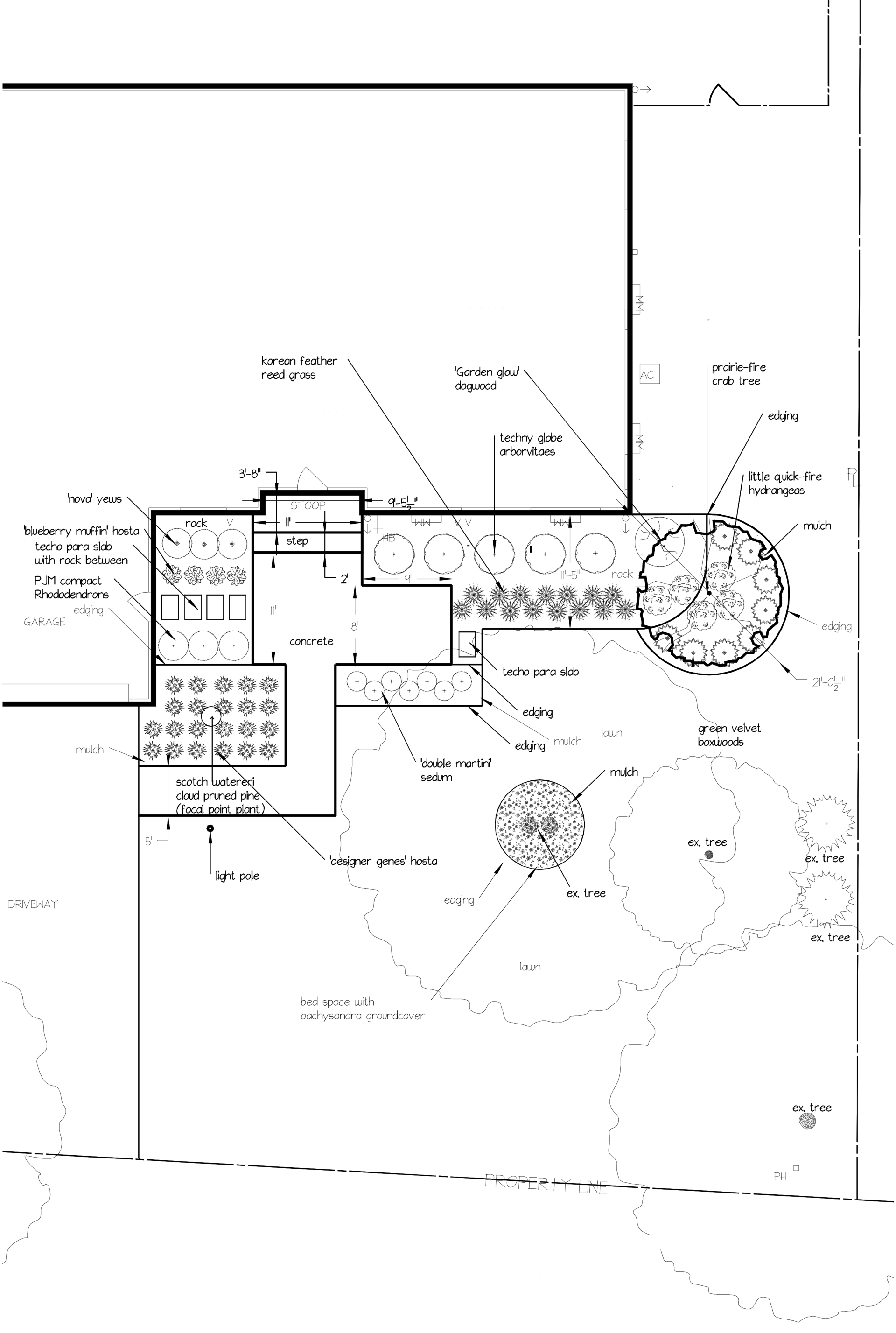Project Example - Mid Century Modern Front Yard Landscaping
Mid-Century Modern Front Yard Landscaping Curb Appeal
Project Overview
There are many great examples of Mid-Century Modern homes in the Twin Cities. The homes are of an era primarily built post World War II from around 1945 to the 1980’s. It was a style heavily influenced by the Bauhaus school of modern design that fled Germany as well as the works of Frank Lloyd Wright and the prairie style school of design centered around Chicago.
Characteristics of these homes were flat planes, clean lines, angular shapes, large windows, minimalist exterior design, functional interior spaces, and blending with nature.
Our client’s residence is a prototypical mid-century modern rambler home. Tucked away in a quaint Minnetonka, MN neighborhood, with mature trees for a backdrop, it sits on a simple plateau above the street and is defined by its low plane, mix of materials, and shapes on the facade. It has a gradual change in elevation from the garage to the main entrance that helps put the focus on the front entry.

The client hired KG Landscape to create a refreshing landscape design that would better align with the character of the house. This mid century modern front yard landscape was accomplished by first redesigning the hardscape elements to compliment the house. Pavers were adhered to the concrete stoop at the front door to add character, an additional element of muted color to the house, and to provide definition to the home's entrance. A new sidewalk with side patio was constructed in a fashion to play on the planes of the house and garage anchor them together. Large paver step stones were run as a minor path from the garage service door and from the patio into the lawn to give the path it’s own unique character while keeping focus on the front door of the residence.

Softscape elements were introduced to compliment and mirror the linear nature of the house. A bed of river rock mulch is used to set a plinth like base for the face of the house and tie in the concrete patio and walk. Layered in front of that is a contrasting bed mink colored hardwood mulch that creates a medium layer between. Ultimately this creates textures, tonal values, and layers that gradually soften outward into the landscape.
Like the beds, the plant material is layered planes using varying textures and adds a flattering palette of muted colors. Plant material use along key locations accentuates the elements of the architecture. The contrast of their color is played off against the structural elements. Instances can be seen in the use of dark green ‘Nova’ Yews against the cream brick or the ‘Designer Genes’ Hosta placed in dark brown mulch between the emerald green colored siding and the cool grey concrete. Focal points, such as the ‘Scotch Bonna Hindu’ Pine and the ‘Prairie Fire’ Crabapple are used in key areas to soften vertical elements and frame in spaces as you move through the yard.


